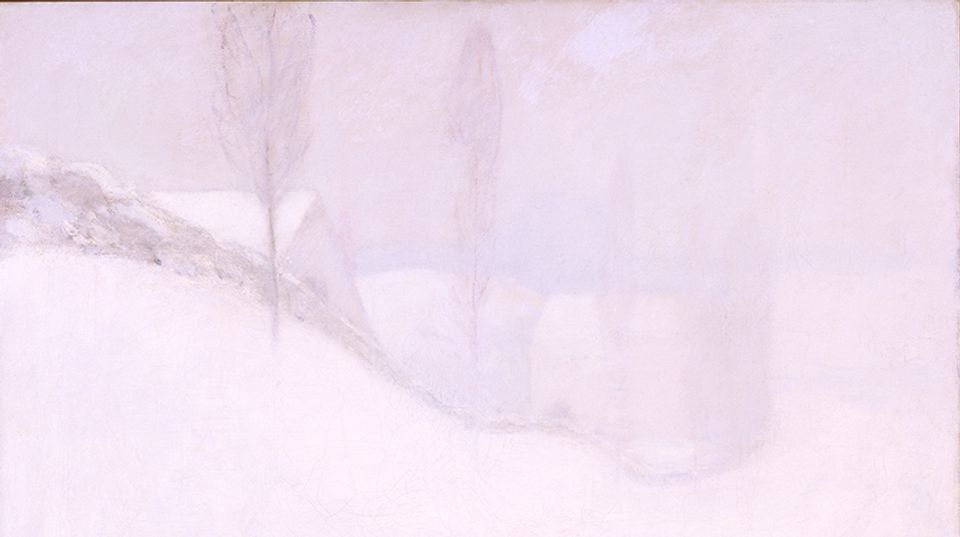
In the Washington Post, Style Section Editor John Pancake discusses Elihu Vedder's The Sun God in an interview with SAAM framer Martin Kotler, who faced a challenge in building a frame for the piece. Originally, The Sun God was a triptych design element set in a fireplace. Kotler's solution was simple—build a frame that suggests a fireplace. Of course, any simple frame represents any number of complicated decisions about composition and emphasis. Kotler's design draws the eye toward the top of the piece, leaving other elements be. The directionality is appropriate to the design and suggestive of the crown of Apollo, sun god but also god of music and arts.
In the interview, Kotler discusses his decision not to build out the detailing on the fireplace frame. Indeed, understated is probably the best decision that Kotler could have made. A more elaborate, period-appropriate frame might not necessarily compete with the original, but it would be difficult to use such a frame without erasing the work's original context.
Vedder's own work called for a great deal of this sort of interpretation. Just this weekend, a clerk in a District antique store (where I was checking out a Sam Gilliam painting) showed me a copy of the Rubáiyát of Omar Kayyám, a cherished copy, certainly not for sale. In Vedder's celebrated edition, he illustrates Omar's concrete images but also adds distinctive images of his own. Vedder's illustrations accompany the text translated and arranged by Edward FitzGerald, making the final piece the work of three people. Vedder described his approach to the work: "Certainly three kindred spirits have here encountered each other; and although the first two missed each other on earth by eight centuries and the last two by twelve months, still in the heart of the survivor lingers the hope that in the life 'sans end' they may all yet meet." The continuation of a piece of art sometimes calls for transformative and interpretive leaps that can take place across decades and centuries.

















